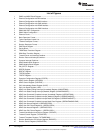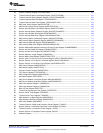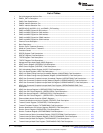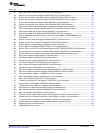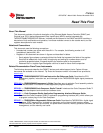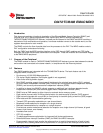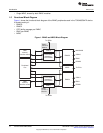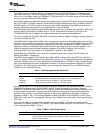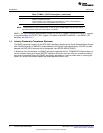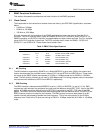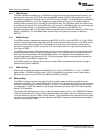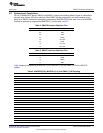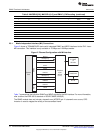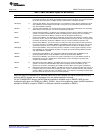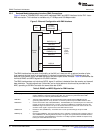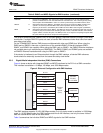
Introduction
www.ti.com
Table 2. EMAC1_EN Pin Description (continued)
Value Description
1 EMAC1 is enabled and used.
Pulls on EMAC1 I/O are disabled (except RGMII pins) and the corresponding I/O
buffers are powered up except RGMII output-only pins.
NOTE: RGMII buffers are HSTL buffers with no internal pulls. RGMII output only pins will always
be powered down even when the module is enabled.
EMAC1_EN is also software programmable through the DEVCTL register. A write to the DEVCTL register
is key-protected by the DEVCTL_KEY register. For details of MACSEL0, MACSEL1, and EMAC1_EN
decoding, see Section 2.3.
1.4 Industry Standard(s) Compliance Statement
The EMAC peripheral conforms to the IEEE 802.3 standard, describing the Carrier Sense Multiple Access
with Collision Detection (CSMA/CD) Access Method and Physical Layer specifications. ISO/IEC has also
adopted the IEEE 802.3 standard and re-designated it as ISO/IEC 8802-3:2000(E).
In difference from this standard, the EMAC peripheral integrated with the TCI6486/C6472 device does not
use the transmit coding error signal MTXER. Instead of driving the error pin when an underflow condition
occurs on a transmitted frame, the EMAC intentionally generates an incorrect check sum by inverting the
frame CRC so that the network detects the transmitted frame as an error.
14
C6472/TCI6486 EMAC/MDIO SPRUEF8F–March 2006–Revised November 2010
Submit Documentation Feedback
Copyright © 2006–2010, Texas Instruments Incorporated



